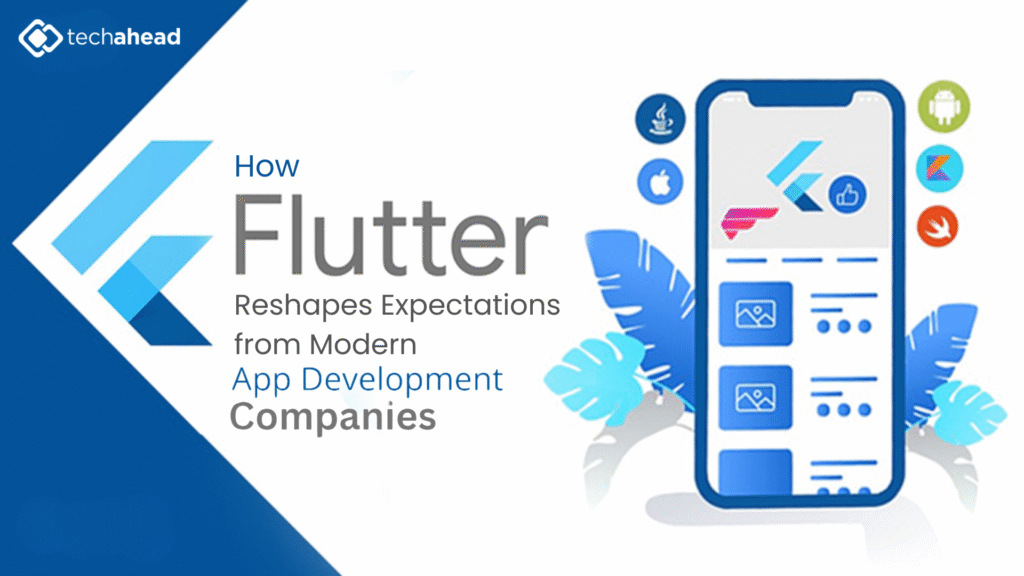
Modern mobile apps are judged on speed, smoothness, and consistency across screens. A startup racing to launch its first version and a large brand expanding its digital footprint want the same thing now: quick cycles and a polished result.
For years, teams kept separate codebases for Android and iOS. That meant bigger teams, longer timelines, and higher costs. As mobile became central to customer experience, many of those trade-offs started to look like avoidable friction.
Buyers now ask for faster delivery, cleaner handoffs, and easier maintenance. That shift has pushed Flutter into the spotlight.
Where Flutter Fits in the Modern App Stack
Flutter lets teams ship to Android, iOS, web, and desktop from a single codebase. For many buyers, a Flutter app development company stands out here, because a single build path means less work and a quicker launch.
More than a framework, Flutter encourages a different working style: tighter designer-developer loops, earlier previews, and fewer platform surprises.
Agile has become a more important characteristic. By utilizing Flutter, teams can maintain their look across platforms, reduce excess engineering costs, and have greater budget certainty.
Why Businesses are Rethinking Delivery
Waiting months for a basic build is no longer consistent with the teams most people are using today. Product managers want to experiment with ideas early on, pick up user signals, and adjust without creating a traffic jam on the roadmap.
Flutter supports that pace with:
- One codebase that gets compiled to multiple platforms
- Hot Reload for near-instant visual feedback while in an iteration phase
- Rich widget system for custom interfaces without compromising or awkward workarounds
- Performance that feels “native” on iOS and Android
When this is accessible, scoping becomes more explicit, and you can visually show progress of implementation week-to-week.
Startups and MVPs Feel the Impact First
Founders often substitute speed for scope. Flutter reflects that business reality. Any small team can deliver a production quality MVP within a matter of weeks, learn from early customers, and double down on the ideas that matter.
That speed, combined with the reduced engineering footprint, explains why many early-stage companies are looking for Flutter specialists rather than traditional agencies. The same pattern is spreading to mid-market and enterprise groups that want shorter cycles without growing headcount.
Visual Consistency is Now Expected
Brand experience is part of product quality. Users notice when screens drift between platforms, especially on flows like sign-in or checkout.
Achieving that level of parity used to be slow and expensive. Flutter narrows the gap with its rendering engine and widget system, which give fine-grained control over layout and interaction.
Consider a retail app that must keep the cart and payment steps identical across devices. With a unified codebase, the design review stays focused on one source of truth. Iterations are simpler, and parity does not depend on two separate implementations.
Collaboration, not Long Handoffs
The client-developer relationship is changing. Few teams want to share a brief and wait half a year. They prefer steady progress, early feedback rounds, and working builds they can try on real devices.
Flutter helps that happen. Quick builds and hot reload let developers share updates frequently, so stakeholders can react in real time and ask for adjustments right away. Projects stay closer to the original goals, and rework drops.
What a Modern Partner Looks Like
A modern app development company is expected to support more than code. Product framing, user experience, testing, and post-launch growth all matter.
Flutter-focused teams are set up for that mix. The team runs quick cycles, tests as they go, and publishes across platforms from the same code. Once live, fixes and features roll out quickly, so the product stays current without piling on extra work.
What this Change Means For You
The growth of Flutter shows a change in what counts as value. Speed, design consistency, collaboration, and room to scale now sit alongside engineering depth. Clients expect more from partners today. The bar is clear communication, good product calls, and features that fit changing goals. Flutter helps companies hit those marks with a single, consistent setup.
Buyers benefit from shorter timetables, fewer design trade-offs, and an app that remains easy to maintain and expand.
Final Words
Flutter has changed how apps are built and how companies select developers. It offers a faster and more consistent path to multi-platform delivery. At the same time, it has reset expectations for service firms.
Teams that move quickly, craft polished interfaces, and support the product after launch are the ones that stand out. Companies that specialize in Flutter are well placed to meet that standard.